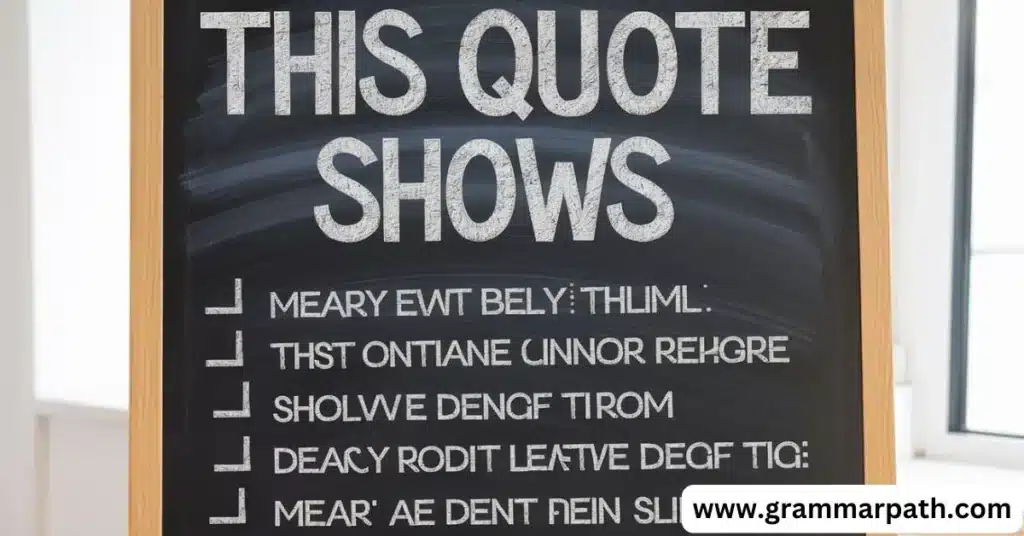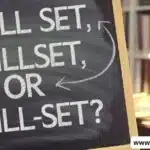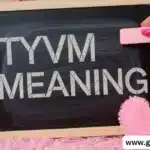When you’re working on academic writing or trying to convey the deeper meaning behind a passage, you might find yourself repeating the phrase, “This Quote Shows.” While this expression gets the point across, it can feel a bit repetitive. Varying your language not only makes your writing more dynamic but also ensures a richer, more engaging read for your audience.
In this article, we’ll explore 20 alternative ways to say “This Quote Shows,” giving you fresh expressions to elevate your writing.
is it Professional to Say: “This Quote Shows”
Using “This Quote Shows” can be seen as less professional, especially in academic writing or formal settings. It lacks the sophistication and depth often required in professional communication.
Opting for more refined alternatives, such as “This quotation illustrates” or “This passage reveals,” demonstrates stronger command over language and presents a more polished analysis. Varied expressions create a more engaging and credible tone.
What To Say Instead of “This Quote Shows”
- This Example Illustrates
- This Passage Emphasizes
- This Segment Depicts
- This Quotation Conveys
- This Statement Clarifies
- These Words Illustrate
- This Phrase Reflects
- This Line Suggests
- This Statement Portrays
- This Quote Sheds Light On
1. This Quotation Illustrates
Using the phrase “This quotation illustrates” is a great way to convey that the quote you’re referencing paints a clear picture of the point you’re making. It’s a versatile phrase that works well in both formal and informal contexts, providing a smooth transition into an analysis.
Example:
“In her letter, Emily mentions the challenges of growing up in a small town. This quotation illustrates the isolation she felt, which is a central theme in the story.”
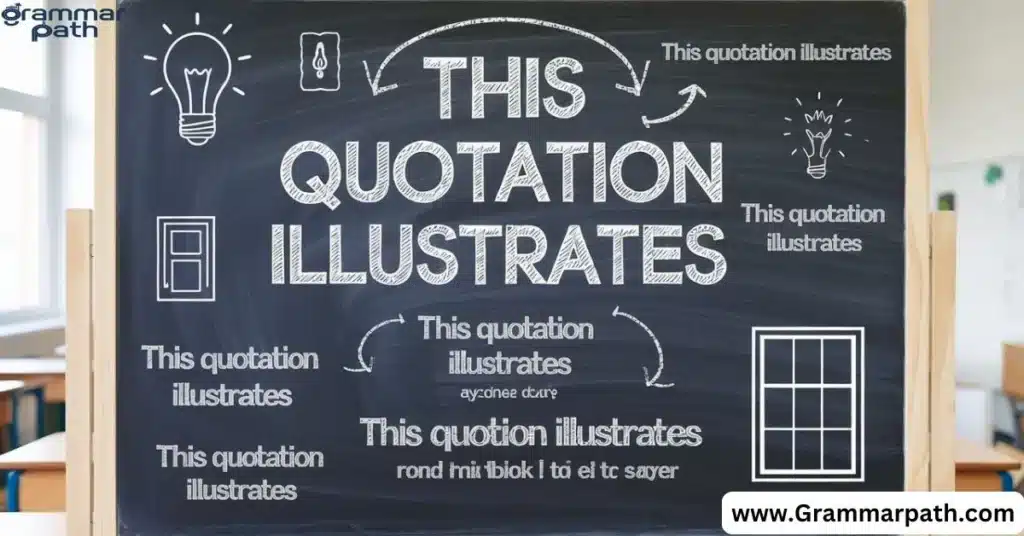
2. This Excerpt Demonstrates
The phrase “This excerpt demonstrates” adds emphasis to the point being made, particularly in academic writing. It’s useful when you’re trying to show how a piece of text actively supports your argument.
Example:
“As Mark Twain humorously critiques societal norms, this excerpt demonstrates his keen understanding of human nature.”
3. The Passage Reveals
“The passage reveals” is ideal when you want to discuss something uncovered in the text that wasn’t immediately obvious. This phrase works well when pointing out subtleties or underlying themes within a quote.
Example:
“Though subtle, the passage reveals the character’s growing mistrust in authority, setting the tone for the conflict that follows.”
4. This Citation Highlights
When you need a polished phrase that elevates your writing, “This citation highlights” is an excellent choice. It’s especially fitting in research papers or academic writing, adding a formal tone to your explanation.
Example:
“According to Smith’s findings, this citation highlights the direct relationship between income inequality and crime rates.”
5. These Words Underscore
If you’re looking to draw attention to the underlying importance of a quote, “These words underscore” is a perfect alternative. It allows you to focus on the critical aspects of a passage without sounding repetitive.
Example:
“The author’s use of metaphors in this poem is powerful. These words underscore the emotional depth behind the speaker’s struggles.”
6. This Statement Evidences
For a more direct, factual approach, use “This statement evidences.” This phrase is highly effective in persuasive or argumentative writing, making it clear that the quote supports your thesis or claims.
Example:
“By acknowledging the economic disparities, this statement evidences the ongoing struggle between the wealthy and the working class.”
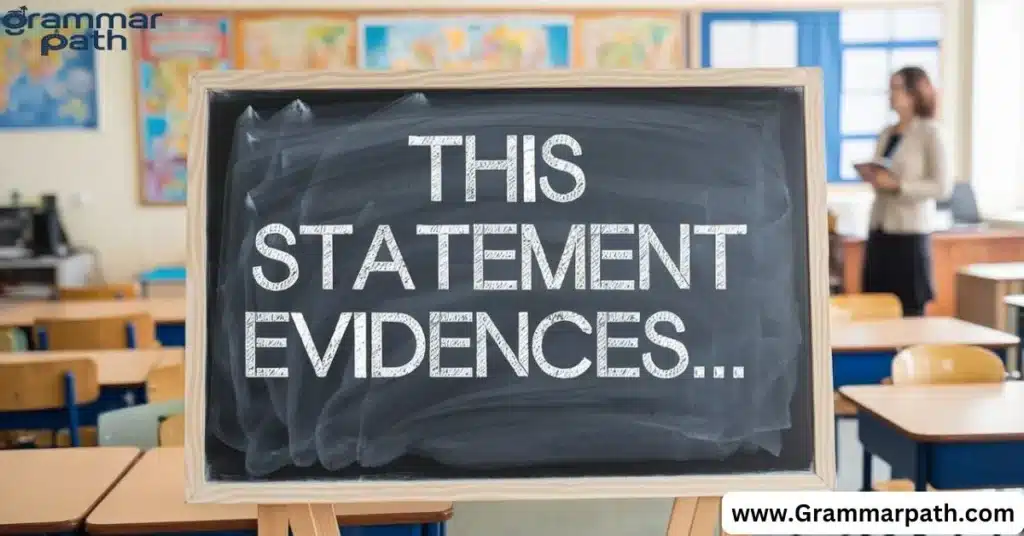
7. This Excerpt Exemplifies
“This excerpt exemplifies” is a solid replacement for “This Quote Shows,” adding a level of sophistication to your analysis. It’s best suited for literary essays, where you’re interpreting themes, characters, or narrative techniques.
Example:
“In Shakespeare’s Macbeth, this excerpt exemplifies how ambition can lead to moral corruption.”
8. The Quote Delineates
Another strong alternative is “The quote delineates.” This expression is useful when you want to explain something clearly and precisely drawn out in the text. It’s a bit more formal but works beautifully in detailed analysis.
Example:
“In this passage, the quote delineates the protagonist’s internal conflict, illustrating the complexity of his decisions.”
9. These Lines Indicate
“These lines indicate” is a simple yet powerful alternative when you want to suggest that the quote points to something directly. It’s especially helpful in conversations or emails where you want to express analysis in a concise manner.
Example (Email):
“Hi Sarah, I’ve reviewed the report, and these lines indicate that we should adjust our marketing strategy to better align with customer expectations.”
10. This Snippet Reflects
“This snippet reflects” offers a creative way to say “This Quote Shows.” It’s ideal when analyzing shorter pieces of text or small quotes that encapsulate a larger idea.
Example:
“Though brief, this snippet reflects the author’s ongoing fascination with the concept of time and its impact on human behavior.”
Pro Tips
The paragraph discussing “This quotation illustrates” is the key to understanding how varied phrases can enhance the richness of your writing. By starting with this phrase, you can immediately capture your reader’s attention, showcasing how changing simple expressions improves both the tone and depth of your work. The phrase introduces the idea that quotes can be used not just to prove a point but to paint a vivid picture, making it crucial for engaging vocabulary.
Pro Tip: When discussing quotations, consider the context and meaning behind the words. By selecting phrases like “This quotation illustrates” or “This citation highlights,” you’re showing a deeper connection between the quote and the argument you’re making. Use this approach to guide your reader through the analysis smoothly, making your insights feel more dynamic and compelling.
11. This Example Illustrates
“This example illustrates” is a flexible phrase that works well when you’re drawing attention to a specific instance within a quote. It’s especially useful when the example clearly supports your point.
Example:
“As Jane explains her struggles with time management, this example illustrates the common challenges faced by working professionals.”
12. This Passage Emphasizes
When you want to underline the importance of a particular point, “This passage emphasizes” is an ideal choice. It brings attention to critical elements within the text, adding weight to your argument.
Example:
“In the final chapter, this passage emphasizes the protagonist’s transformation, highlighting the moral lesson of the story.”
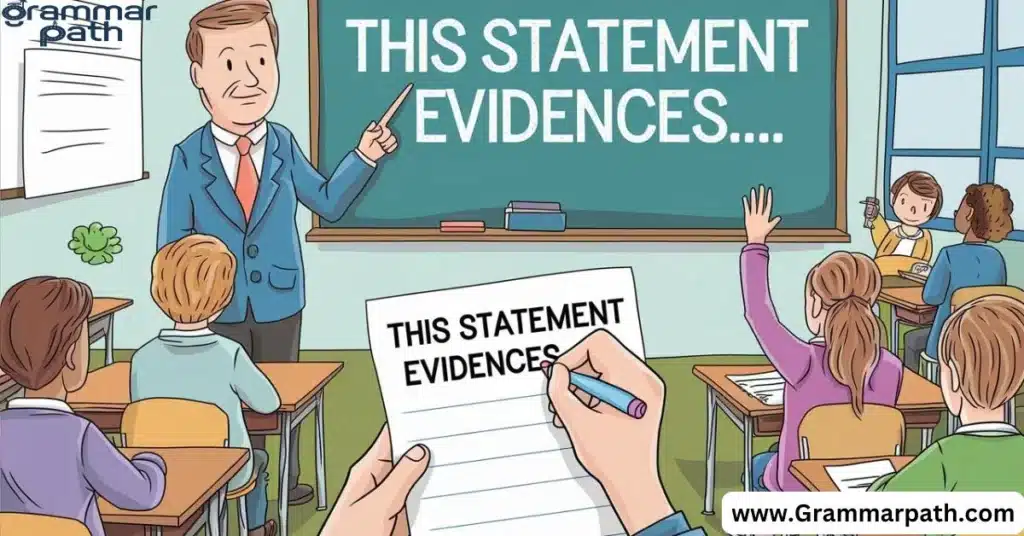
13. This Segment Depicts
“This segment depicts” is another excellent way to point out what a particular part of a text is showing. It’s a concise phrase that keeps your writing sharp and to the point.
Example:
“Throughout the novel, this segment depicts the stark contrast between wealth and poverty, a recurring theme in the author’s works.”
14. This Quotation Conveys
“This quotation conveys” is a great phrase when you want to explain how a quote communicates a specific feeling, idea, or theme. It’s perfect for literary analysis or emotional writing.
Example:
“Through the character’s dialogue, this quotation conveys a sense of deep betrayal that sets the tone for the rest of the narrative.”
15. This Statement Clarifies
Use “This statement clarifies” when you need to highlight how a quote makes something clearer or more understandable. It’s often used when explaining a complex idea in simpler terms.
Example:
“By defining the term, this statement clarifies the confusion around what constitutes ethical business practices.”
16. These Words Illustrate
“These words illustrate” is a straightforward but effective way to reference a quote. It adds emphasis on how specific words within a quote can reflect deeper meanings.
Example:
“In the author’s reflection on friendship, these words illustrate the enduring power of trust and loyalty.”
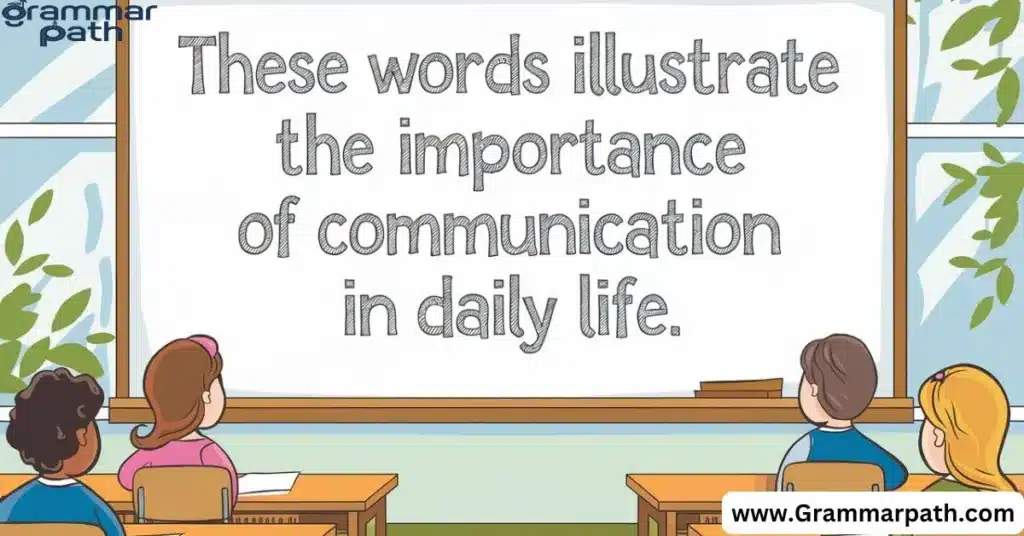
17. This Phrase Reflects
“This phrase reflects” is useful for shorter quotes or phrases that capture a larger concept or theme. It’s often used in writing that breaks down smaller pieces of text.
Example:
“Although brief, this phrase reflects the character’s growing disillusionment with societal norms.”
18. This Line Suggests
For a subtle way of analyzing a quote, try “This line suggests.” It implies that the quote points to a deeper meaning without making it explicitly obvious, giving room for interpretation.
Example:
“In his speech, this line suggests that progress can only come from collective effort, a core belief in his political campaign.”
19. This Statement Portrays
“This statement portrays” works well when the quote vividly depicts a particular scene, emotion, or concept. It adds richness to your analysis by making the imagery more vibrant.
Example:
“Through vivid descriptions, this statement portrays the bleakness of the post-apocalyptic world the characters inhabit.”
20. This Quote Sheds Light On
When a quote reveals something previously unknown or unexamined, “This quote sheds light on” is the perfect phrase to use. It suggests that the quote brings new information or clarity.
Example:
“In the final interview, this quote sheds light on the actor’s motivation for taking on such a challenging role.”

Pro Tips: Writing With Depth and Variety
Incorporating phrases like “This example illustrates” or “This quote sheds light on” can dramatically improve the flow and depth of your writing. To keep your content dynamic, make sure you vary these phrases throughout the article. Avoid overusing any single expression—this will ensure that your analysis remains engaging and your writing feels fresh.
Pro Tip: When writing analysis-heavy content, focus on clarity. Using varied phrases like “This line suggests” or “This statement portrays” adds richness to your work, making each point distinct and clear. Break up longer sections with shorter sentences to keep your reader’s attention while emphasizing the core message.
Frequently Asked Question
What is another way of saying “this shows that”?
Here are several alternatives to saying “this shows that”:
- This demonstrates that
- This illustrates that
- This indicates that
- This reveals that
- This highlights that
- This exemplifies that
- This proves that
- This conveys that
- This implies that
- This underscores that
- This suggests that
- This reflects that
- This clarifies that
- This establishes that
- This supports the idea that
How to explain a quote without saying this shows?
To explain a quote without saying “this shows,” you can use phrases like:
- “This highlights that…”
- “This conveys the idea that…”
- “This suggests…”
- “This emphasizes…”
- “This illustrates…”
- “This implies…”
What can I say other than this quote shows?
Instead of saying “this quote shows,” you can use:
- “This quotation illustrates…”
- “This passage highlights…”
- “These words emphasize…”
- “This excerpt demonstrates…”
- “This line conveys…”
- “This statement reflects…”
- “This phrase underscores…”
How to avoid saying this quote shows?
To avoid saying “this quote shows,” try using:
- “This statement highlights…”
- “These words reveal…”
- “This excerpt conveys…”
- “This line emphasizes…”
- “This passage illustrates…”
- “These phrases suggest…”
- “This text reflects…”
Conclusion
In conclusion, by exploring these dynamic replacements for “This Quote Shows,” you can elevate your writing and keep it engaging. Whether you’re working on academic writing, crafting an important email, or simply discussing literature, using varied expressions like “This excerpt demonstrates” or “This passage reveals” adds sophistication and clarity to your work. By integrating fresh alternatives and avoiding redundancy, you ensure that your writing remains original and captivating.
Embrace these 20 ways to say “This Quote Shows” to give your writing the complexity and burstiness that reflects human speech, making it vivid, engaging, and most importantly, effective.

Emily Olivia is an experienced writer specializing in grammar and English language topics. With a passion for clarity and precision, she shares valuable insights on synonyms, grammar rules, and writing tips to help readers enhance their language skills on Grammar Path.

